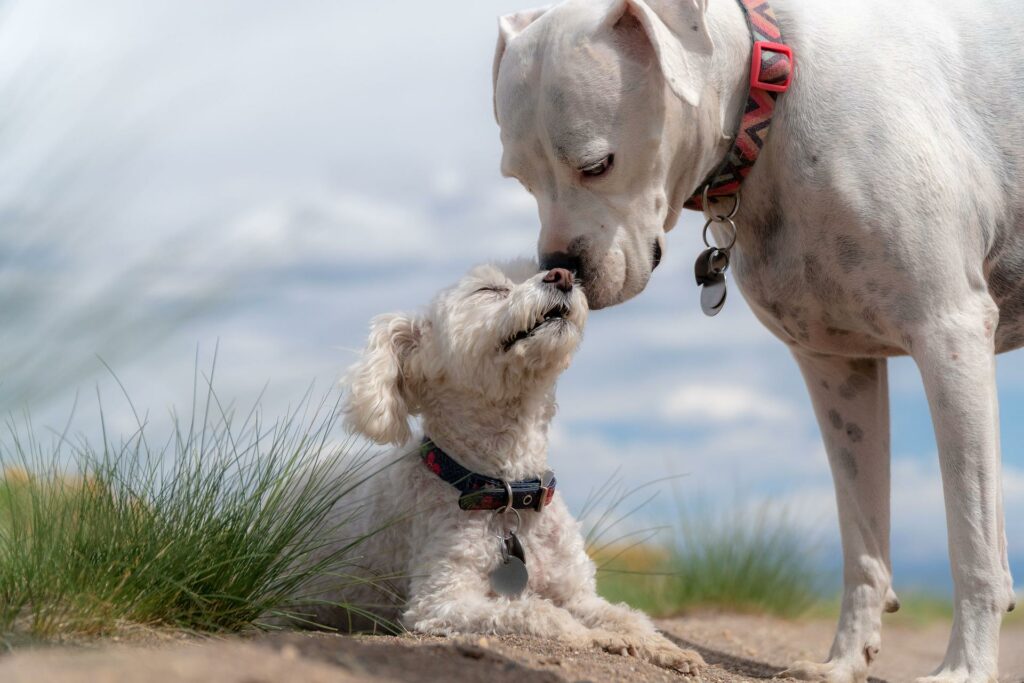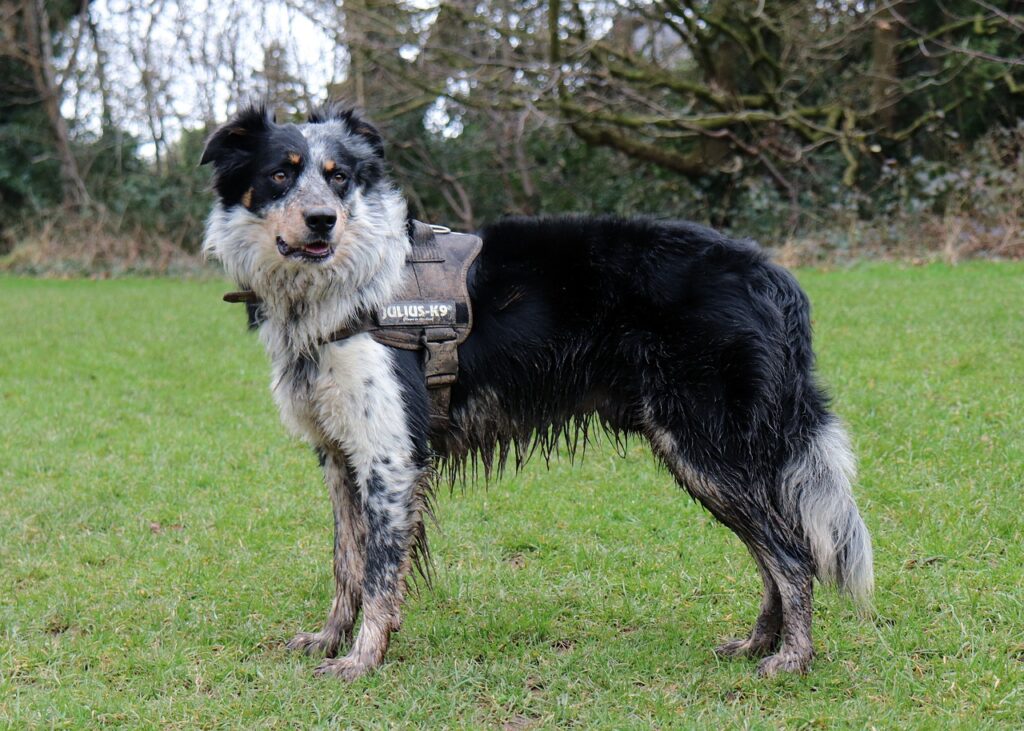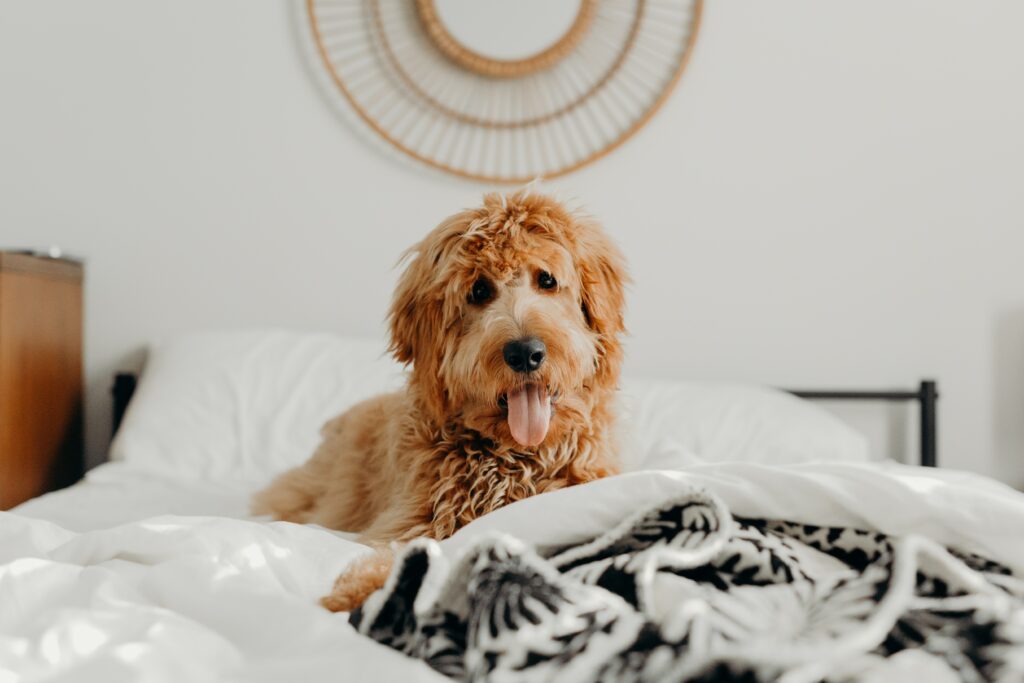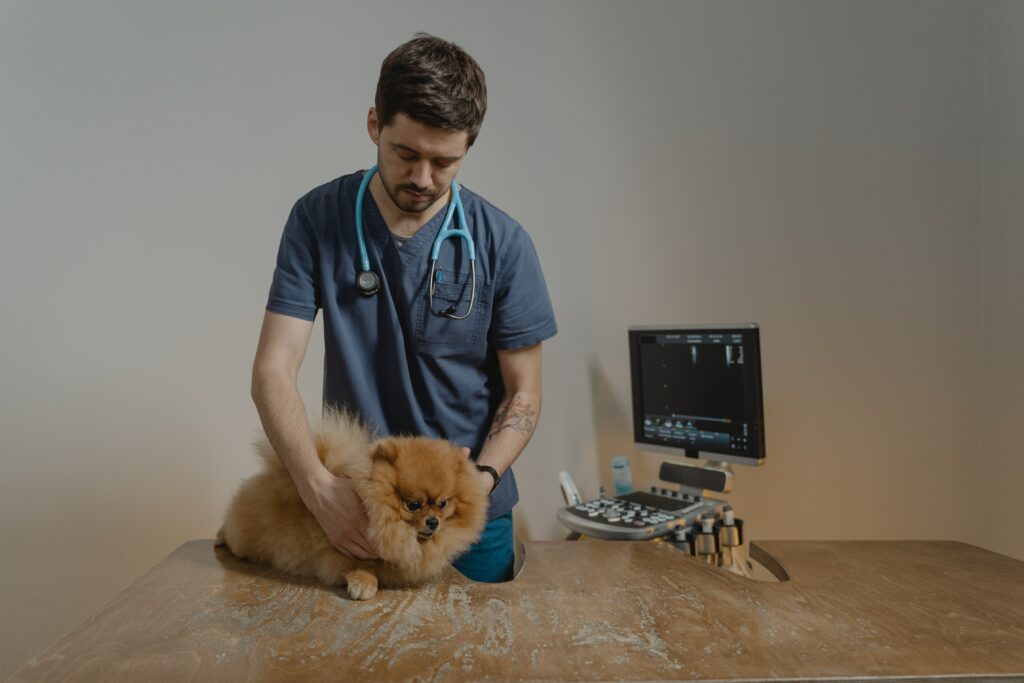We're an affiliate
We hope you love the products we recommend! Just so you know, we may collect a share of sales or other compensation from the links on this page at no additional cost to you. Thank you if you use our links, we really appreciate it!
Being a pet parent is not easy, good time management is essential to manage your schedule which includes the time you will be out for work, when to take your dog for walks, their feeding time, and much more.
If you have office work, then you probably have to leave your dog at home alone for several hours.
And if your dog is not potty trained or unable to hold their pee for a few hours then they will likely pee on your favorite rug or much worse, your bed.
So how long can dogs hold their pee? This is a question that you may ask yourself as soon as you adopt a new puppy or an adult dog.
The frequency of your dog’s bathroom breaks can also be used to assess whether your furry friend is suffering from a medical condition.

The color of your dog’s urine can tell you if there is an issue with their kidneys or the urinary tract. This is an issue that should capture your attention and proper actions should be taken to prevent your dog from developing serious medical conditions.
How Long?
A one-month-old puppy can hold their pee for a maximum of one hour, whereas a fully grown adult dog can hold their pee between 10 to 12 hours.
There’s no definitive time range within which all dogs can hold their pee. Several factors will come into play in determining how frequently your furry friend needs their potty breaks.
Factors That Impact the Time They Can Hold Their Pee
Several factors will affect how frequently your dog will need to pee. The following are some of them:
1. Age
This is the biggest factor that will determine how long your furry friend can hold his pee. Puppies and adolescent dogs would go to the bathroom more frequently than their senior counterparts.
Younger dogs are more prone to accidents because their bladders and urinary tracts are still developing.

The muscles that hold down your dog’s pee need to be strong to effectively contract and relax when controlling pee.
You need to start potty training your puppy as early as possible to ensure that he learns how to control his bathroom breaks.
Potty training a puppy also helps your puppy to learn that there are appropriate areas where they are required to pee. This reduces the accident cases you might encounter on your household furniture.
Teaching your puppy to hold pee might be uncomfortable for them and that is where many pet parents find it difficult to train their pups effectively.
However, with the right methods, discipline, and consistency, you will be able to train your puppy to control their bathroom breaks.
Newly born puppies that are one month old or less are not capable of holding their pee. At this stage, you need to be ready to wipe off their potty accidents to keep good hygiene in your house.
Puppies older than one month old can hold their pee and they increase the amount of time they can do that as they age.
| Dog’s Age | How Long They Can Hold Pee |
| 0 to 3 weeks | Inconsistent |
| 1 to 2 months | 1 to 2 hours |
| 3 months | 3 hours |
| 4 to 6 months | 4 to 5 hours |
| Above 7 months | 6 to 8 hours |
| 7 years | 10 to 12 hours |
| 12 Years | 3 to 4 hours |
When a dog enters his elderly years, he will increase his bathroom breaks due to his weakening body and loose muscles.
2. The Health Status of Your Dog
The health condition of your dog will certainly tell how frequently they will take their bathroom breaks.
If your dog is suffering from a serious health problem, then they might even have difficulties in holding and controlling their bladder totally.
The most common health issues that affect the frequency of peeing are; kidney disease, bladder cancer, urinary tract infections, inflammation, and diabetes.

Some health concerns that cause trauma, stress, and anxiety can even make your dog mess up themselves without having any control. In such cases, you will notice that your dog will carry along the smell of urine on their bodies.
If you notice that your dog is suddenly urinating more frequently than usual, then you need to visit the vet and get them diagnosed.
Other factors that may tell your dog’s health status are; Abnormally small or large amounts of urine and the presence of blood in the urine.
If you have a dog that has good bathroom behavior and suddenly starts soiling all possible places in the house, then that might be a sign of sickness too.
3. What Your Dog Eats
A dog that consumes more water will certainly have frequent bathroom breaks compared to the one that drinks less. Other factors will come into play to determine how much water your dog can drink per day.
An active dog that has been running up and down throughout the day will find it soothing to drink plenty of water. You can ensure your dog gets the needed amount of water by getting him a suitable water fountain.

The types of food that a dog consumes will also dictate how long they will hold their pee. Foods rich in fatty protein and salt tend to increase your dog’s thirst for water and might end up drinking more, hence increasing their potty breaks.
Wet food with moisture will aid in increasing the frequency of urination throughout the day. It is recommended to strike a balance between the wet and dry foods you give your dog daily.
Some pet parents always rely too much on dry foods for their dogs because of the convenience that comes along with it.
Wet foods are good for your dog because aside from the nutritional value, freshness, and good taste, it also aid in flushing out toxins from your dog’s body.
Always keep your dog hydrated by ensuring that he never gets thirsty for too long. You can know your dog has been dehydrated by observing the color of his urine.
If your dog excretes dark yellow urine, then that is an indicator that you need to fill up their water fountain and add some wet foods to their diet.
4. The size of your dog
How long can small dogs hold their pee and how long can large dogs hold their pee? The definite answer is that they cannot hold their pee within the same range of time.
Small and toy-breed dogs will generally have more potty breaks than large-sized dogs. This is attributed to some factors including bladder size, activity level, and breed.
A dog will pee between 10 to 20 milliliters of urine for every pound of their body weight. A 4-pound dog will produce 40 to 80 milliliters of urine per day while an 8-pound dog will excrete 80 to 160 milliliters of urine per day.
Small dogs have small bladders compared to large dogs, so they produce less urine than large dogs. The bladder of a small dog will fill up faster and hence result in frequent potty breaks compared to large dog breeds.
How To Train Dogs to Hold Their Pee and Wait for Their Daily Walks
Potty training your puppy to good bathroom behavior is a process that requires commitment and consistency.
Most pet parents get discouraged along the way when they realize that their pups are not making any improvements as they thought.
Remember not to punish your doggo when they pee in the house. You just need to be more patient with your little furry friend and allow him to learn the process even when he makes some accidents along the way.
When house training your puppy, you would need a few things that will help you along the journey. You should look for a good dog pee pad that has the ability to hold your dog’s urine without leaking it to the floor or carpet. The pee pad should also be sizable enough to accommodate your dog.
You will also need to find a good pet odor eliminator to remove pee odor from the spot where your pup has made an accident.
The Importance of Daily Walks for Bathroom Time
Taking your dog out for walking is a good routine for their daily exercise and bathroom time. Walking improves your dog’s metabolism which helps to keep their weight in check and overall health.
Daily walks will also allow your dog to relieve himself naturally and help build a connection with the outside environment.
Some dogs are territorial and they will pee along the way as they walk to leave a trace of their presence through pee scent.
Your dog will easily perceive the smell of pee from other dogs while walking in the neighborhood and this will help him realize that he is surrounded by a host of other canine friends.
Always ensure that your dog is safe when walking with him. You can do this by ensuring that you have him on a leash and a dog harness that gives you control over how far he can walk away from you. Most dog harnesses are also reflective for safer night walks.
1. Create A Routine for Your Dog
Repeated actions will create a routine that is hard to forget. When you need your puppy to learn new things, it is always good to establish a routine and it will be much simpler for both the puppy and you.
I would strongly advise you to start training your puppy as soon as you adopt them. A well-trained puppy or dog will make your life and theirs much easier.

Based on the age of your dog, you can now estimate how long he is capable of holding his pee. If he is two months old, then he can last for an average of two hours.
Based on this information, you now need to take your dog to the peeing spot after every two hours when he is awake. If you wait for longer, then your pup will most likely leave a mess in the wrong area.
2. Pick a specific bathroom spot
If you want your dog to associate certain behaviors with a specific area, then you need to pick a specific spot for the same.
Choose a good spot outside your house where you can create your dog’s small bathroom area.
When you are taking your dog to this spot, put them on a leash and direct them to the spot. Once he starts eliminating his waste, you can speak a specific word or phrase repeatedly.
3. Reward your dog every time he relieves himself
Get him his favorite dog treats and appreciate his positive behavior and learning pattern. It is good to pet your dog and reward him immediately after he has relieved himself fully.
This way, he is able to create a connection between his actions and your rewards to him.
4. Have a regular feeding schedule for your dog
If you give your dog his food and water on a regular schedule, then he will also relieve himself on a regular schedule. Create a three-time feeding pattern for your puppy every day and make them stick to that.
Remember that you are house-training your dog all at the same time. This means that, as you teach them good bathroom behavior, you are also training them to stick to a regular feeding pattern and so on.
Sometimes you might forget to give your dog their food at the appropriate time. This is why you might need to consider getting an automatic dog feeder that will do the work for you consistently without a miss.
These types of dog feeders will also provide good information about your dog’s intake, for example, how many calories he has taken in a day.
You can therefore control your dog’s calorie intake and in turn, help to manage their weight and overall health.
5. When to give your dog water
Most puppies, depending on their age and health condition, can sleep for up to 7 hours without needing to wake up for a bathroom break.
This will also depend on the time he drinks water before going to sleep. It is recommended to give your dog clean water to drink for a minimum of 2 hours and 30 minutes before sleeping.
When your dog wakes up from his sleep for a bathroom break, you need to immediately take them to his designated spot and let them get relieved fully.
Reduce all interactions that may give the impression that you want to play with him. The break needs to be as short as possible for your dog to resume his sleep.
Supervise Your Dog Closely
To be able to house train your dog properly, you need to have close supervision of what he does daily. This will enable you to monitor their progress and observe the areas of weakness that you need to concentrate more on.
Close supervision of your dog will also enable you to prevent them from messing in the house every time he needs a bathroom break.

You can keep your puppy close to you by tethering them to an area that is close to you. You should however not give your dog a very small space that may hinder his freedom to move around the area.
If you need to be out of the house and cannot closely supervise your dog, then you need to place them in their designated area in the house.
Let them be familiarized with this place and provide all amenities that might keep them engaged for the period that you will be out like suitable interactive dog toys.
What To Do If Your Dog Pees on The Bed
If your dog relieves himself on the bed, then it can be frustrating but you need to take immediate action to break that cycle.
If you do not remove and clean your dog’s pee from the bed, then he might be attracted to pee there another time and this can create a repeated pattern.
When your dog pees on your bed, he is not trying to frustrate you in any way. He just found a cozy spot, warm, absorbent, and one that smells like you. You, therefore, don’t need to punish him for this action.

If you catch your dog in the process of peeing, you need to immediately carry and take him to his designated bathroom spot. Once he is done relieving himself fully, praise and reward him for peeing outside instead.
If your dog was properly potty trained and he suddenly relieved himself on a bed, then there might be a problem.
He might be suffering from a condition that makes them unable to hold pee or increase the frequency of urination. In this case, you need to take them to the vet for further diagnosis.
Reasons Why Your Dog Needs Regular Potty Breaks
It is not good for your dog to hold his pee for a long period of time. This action will make them uncomfortable and might lead to other problems including the following:
1. Creating a mess
A pressed dog will relieve himself when the time comes. He might make an accident on your furniture or even pee on your bed. Such actions will require you to further clean your house and remove the pee odor that resulted from the mess.

Dogs are more prone to mess on carpets during the day because that is where they find it more appropriate and convenient.
Failure to clean your carpet properly will attract your dog to continue relieving themselves on the same spot over and over again.
Use a combination of a pet odor eliminator and a suitable carpet cleaner to remove all traces of your dog’s urine from the carpet.
2. Health problems
Your dogs can develop urinary tract infections from holding their pee for too long. Urination also helps in flushing out bacteria and toxins from your dog’s urinary tract.
Failure to pee on time might lead to the build-up of these toxins that may cause the formation of stones, crystals, and blockage.

Your furry friend can also develop Incontinence; where the muscles that hold the bladder become involuntarily weak and unable to control urination. This condition is more prevalent in senior pets.
To Wrap Things Up
Monitoring your dog’s bathroom behavior is good for both the dog’s health and your home’s hygiene. You should always ensure that your dog knows the exact spot where he needs to relieve himself every time he needs a potty break.
Now that you have an idea of how long can dogs hold their pee, my final take is that it is better to let your dog pee frequently than to make them hold it for a longer time than they can.
Better not to wait until your dog’s bladder is full, take them for a walk and encourage them to pee. With time, you will know your dog’s routine and you will be able to fit the walks into your schedule.
Remember to always consult with a vet when you see something that is not right.
Thank you for reading through this post. If you have any questions or concerns, please leave a comment below and I will get back to you.
Laura is the founder of Furs'n'Paws. She is a also a pet writer and expert with more than 20 years of experience of working with dogs and cats. She developed a very strong love for animals at a young age. Her passion led her to establish a thriving pet sitting and dog walking business in Dubai. As an expert in pet training, behavior, and nutrition, Laura is committed to helping pet owners and pet lovers by offering high-quality information on a wide range of topics.



No responses yet